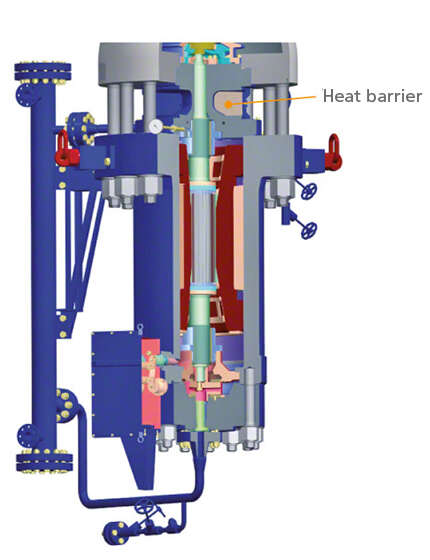Heat barrier
The heat barrier helps prevent the heat transferring from the hot pump to the cold motor so that the insulation of the stator winding (see Asynchronous motor), which has a limited temperature resistance, is not compromised. It is fitted between the pump and motor of glandless circulating pumps. A heat barrier can be cooled with water but in order to keep cooling water demands and energy losses as low as possible it is better to reduce the heat transfer. It is therefore important when designing the pump that the cross-sections which transfer the heat are built as small as possible by incorporating air pockets, and that materials of low thermal conductivity are used.
See Fig. 1 Heat barrier
See Fig. 1 Heat barrier

Fig. 1 Heat barrier: Air-cooled heat barrier of a glandless circulating pump
The heat barrier must be able to resist mechanical strain as the tie bolts clamp the heat barrier between the motor housing and the pump casing.
